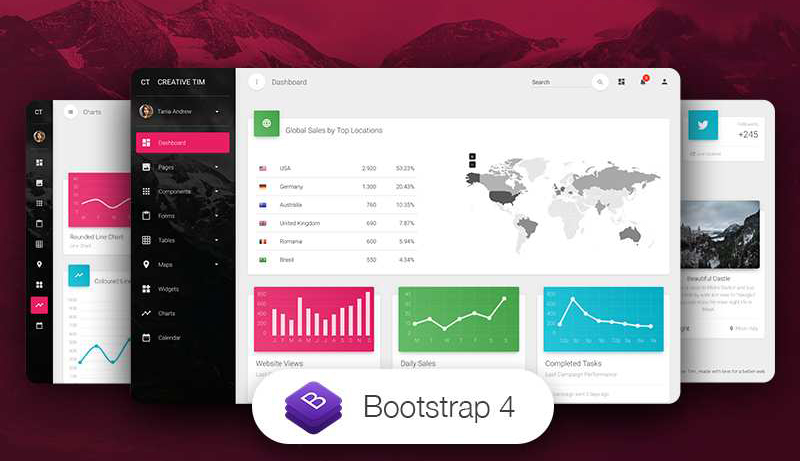Bootstrap Material Design is a combination of two popular web development frameworks. They are Bootstrap and Material Design. Let’s break down what each of these terms means:
BOOTSTRAP
Bootstrap is an open-source front-end framework developed by Twitter. It provides a set of pre-designed HTML, CSS, and JavaScript components, such as buttons, forms, navigation bars, and grids, to help developers create responsive and visually appealing websites and web applications quickly. Bootstrap simplifies the process of web development and ensures cross-browser compatibility.
MATERIAL DESIGN
Material Design is a design language developed by Google. It is a design system that focuses on creating a consistent and visually appealing user interface. Material Design principles include using material-like elements, animations, and transitions to create a responsive and intuitive user experience. It’s known for its use of bold colors, flat surfaces, and consistent UI components.
When you combine Bootstrap and Material Design, you get Bootstrap Material Design, which essentially brings the aesthetics and design principles of Material Design to Bootstrap-based projects. Here are some key features and components you might find in Bootstrap Material Design:
Material Design Colors: Bootstrap Material Design typically incorporates the color palette and design principles of Material Design, which includes vibrant and bold colors.
Material Design Icons: It often includes Material Design icons, which are a set of scalable vector icons that align with the Material Design style.
Typography: Consistent typography guidelines based on Material Design are applied to text elements within the Bootstrap framework.
Cards: Material Design cards are often used for displaying content in a visually appealing way.
Buttons: Material Design buttons with animations and ripple effects can be part of this integration.
Components: Bootstrap components like buttons, cards, forms, and navigation elements are customized to align with Material Design principles in terms of layout, animations, and interaction patterns.
Icons: Material Design icons and iconography are often used to enhance the visual appeal and user experience.
Responsive Design: Like Bootstrap, Bootstrap Material Design ensures that the design is responsive and works well on various screen sizes and devices.
Accessibility: Efforts are made to ensure that the design is accessible to all users, adhering to accessibility guidelines.
Form Elements: Form inputs, checkboxes, radio buttons, and other form elements follow Material Design styling.
Animations: Material Design emphasizes motion and animations to guide user interactions and provide feedback. Bootstrap Material Design may include custom animations and transitions.
To implement Bootstrap Material Design in your project, you can typically find ready-made themes or templates that combine Bootstrap and Material Design styles. These themes provide pre-designed components and styles that you can use as a starting point for your web development project. Keep in mind that the specific implementation and components may vary depending on the version of Bootstrap and the Material Design guidelines being used in the theme or template you choose.

Hi
If you ever need Negative SEO or a de-rank strategy, you can hire us here